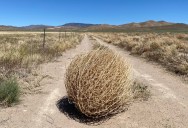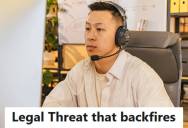What Actually Are Tumbleweeds And Why Are They Considered An Invasive Species?

If you live in certain areas of the country, you’re accustomed to seeing tumbleweeds in the road and out about town.
That doesn’t mean they’re not annoying, but like anything, you get used to it.
What are they, though, and why do we have to accommodate them?
You can’t be more shocked than @whatsinthekoolaid was to find out they’re not made up of sticks at all.
@whatsinthekoolaid everything i know is a lie
“I was under the impression that tumbleweeds were like collections of sticks on the road that just kind of found each other and then rolled around like a desert snowball, like an outside dust bunny.”
She goes on to explain that not only are they not made up of sticks, they’re not an accident, either.
They’re a plant species known in the US as the Russian thistle (Salsola tragus), and begin their life cycle rooted into the ground. It looks sort of like a prickly green bush.
The plant becomes weak near its base as it ages, eventually breaking off and getting caught in gusts of wind.

Though the plant itself is dead, the tumbleweed stage is how it spreads its seeds for the next generation.
Each plant carries between 20,000 and 250,000 seeds, so rolling around is actually pretty effective.
A little too effective, considering the plant is considered invasive and people have little say in where they roll or end up.
In addition to proliferation, tumbleweeds can also get caught in dust devils. Known as “tumbleweed tornados,” they can cause visibility problems on roads and people trying to burn them can add to wildfire problems.

Now you know much of what there is to know about tumbleweeds.
If you come up with any good ideas about how to ease the issues surrounding them, make sure and take them to someone who can make a difference.
If you thought that was interesting, you might like to read about the mysterious “pyramids” discovered in Antarctica. What are they?

Sign up to get our BEST stories of the week straight to your inbox.




